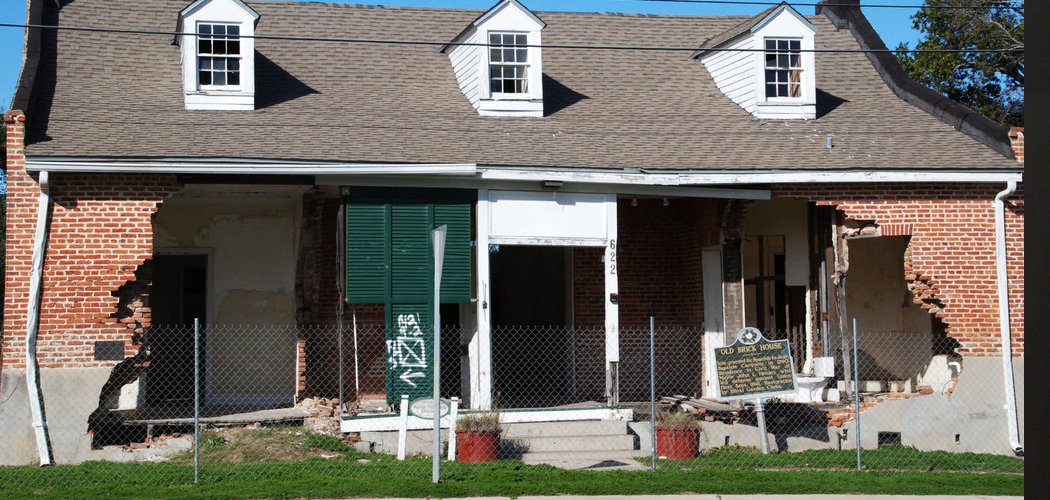During a hurricane, securing sliding doors is critical to prevent extensive damage and ensure the safety of your home.
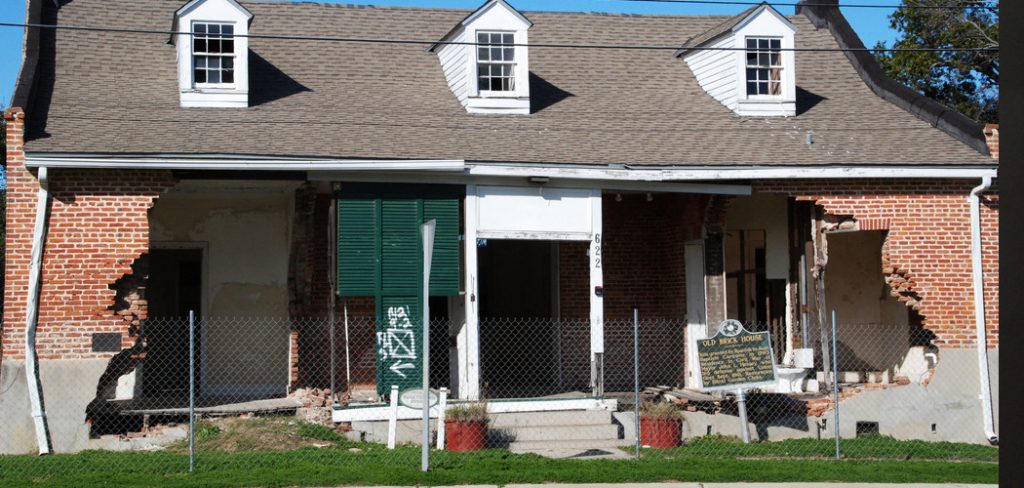
Sliding doors, often made of large glass panels, are particularly vulnerable to hurricane-force winds and flying debris, which can easily compromise their integrity.
The potential consequences of neglecting to protect these entrances include shattered glass, structural damage, and water intrusion, leading to costly repairs and hazardous conditions.
This article will explore various protective measures, ranging from permanent installations, such as hurricane-resistant doors and storm shutters, to temporary solutions like boarding up with plywood and using sandbags.
By understanding how to protect sliding doors from hurricane threats, homeowners can take proactive steps to safeguard their property and maintain peace of mind during severe weather events.
Understanding the Risks of Sliding Doors During a Hurricane
Why Sliding Doors Are Vulnerable
Sliding doors are primarily made of large glass panels, which, while aesthetically appealing, present significant vulnerabilities during a hurricane.
The large surface area of these glass panels makes them particularly susceptible to high winds and flying debris, which can impact the door with tremendous force.
Additionally, most sliding doors feature lighter and weaker frames than traditional doors, compromising their ability to withstand extreme weather conditions. The sliding door design often includes less robust locks and latching mechanisms, further increasing the risk of failure during high-stress scenarios.
This combination of thin frames and expansive glass panels means that sliding doors are often one of the first entry points to experience damage when a hurricane strikes.
Potential Consequences of Inadequate Protection
Failing to adequately protect sliding doors during a hurricane can lead to a range of serious consequences.
One immediate risk is the shattering of glass, which not only poses a danger to occupants within the home but can also allow strong winds and rain to infiltrate, resulting in significant water intrusion.
This can lead to costly repairs and potential structural damage to the home’s interior. Furthermore, once the integrity of a sliding door is compromised, it can create openings for additional debris to enter, exacerbating the damage and risk of injury.
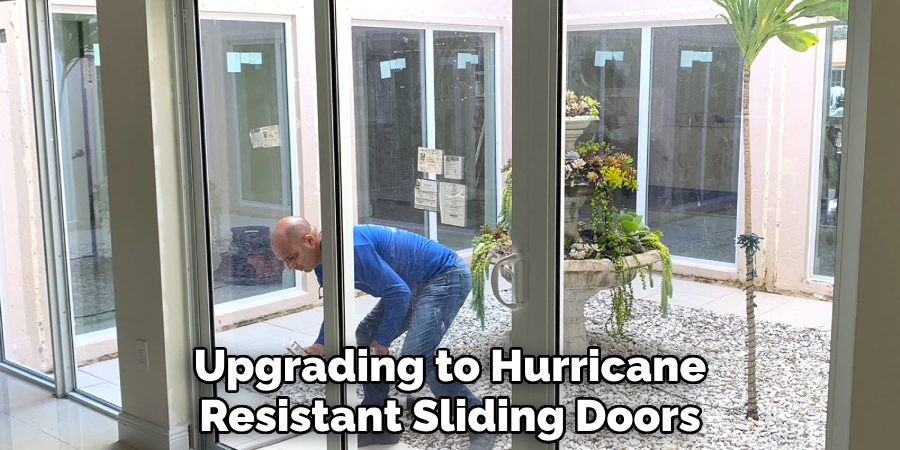
The aftermath of inadequate protection might necessitate extensive repairs, replacement of broken components, and even compromise the overall safety and security of the home. As such, taking the right precautions in advance is essential to avoid these potential hazards.
How to Protect Sliding Doors from Hurricane: Permanent Solutions
Install Hurricane-Resistant Sliding Doors
Upgrading to hurricane-resistant or impact-resistant sliding doors offers significant advantages for homeowners looking to bolster their storm protection.
These doors are constructed from reinforced vinyl or aluminum frames coupled with double or triple-pane laminated glass, specifically engineered to withstand high winds and flying debris.
Installing such doors mitigates the risk of shattering during severe weather, providing peace of mind and enhanced safety. While the costs can vary widely based on size and materials, homeowners can expect an investment that typically ranges from $1,500 to $3,000 per door, including installation.
By opting for hurricane-resistant sliding doors, homeowners not only increase their safety during storms but may also enhance the overall value of their property.
Use Storm Shutters
Another effective permanent solution for protecting sliding doors is the installation of storm shutters. Various types exist, including accordion, roll-down, and Bahama shutters, each offering distinct advantages.
Accordion shutters provide easy deployment and can be closed or opened in seconds, making them ideal for quick setups before a storm.
Roll-down shutters are conveniently motorized or manually operated and provide a sleek appearance when not in use, while Bahama shutters offer additional shade and privacy.
When using storm shutters, it is essential to read the manufacturer’s instructions carefully for installation and operation, ensuring they are securely fastened to prevent damage during hurricanes. Routine maintenance checks before storm season will also ensure that the shutters function effectively when needed.
Apply Hurricane Window Film

Applying hurricane window film is an excellent way to reinforce the glass in sliding doors, adding an extra layer of protection against impacts.
This polymer-based film increases the strength of the glass and helps hold shattered pieces together in the event of breakage, reducing the risk of injury from flying shards.
The application process involves cleaning the glass thoroughly, measuring and cutting the film to size, and using a solution to apply it smoothly, free of bubbles. It’s recommended to have an experienced professional install the film to ensure maximum effectiveness.
While hurricane window film is a cost-effective solution, typically ranging from $5 to $10 per square foot, it should be seen as an enhancement to other protective measures rather than a standalone option. This added protection can be a vital part of a comprehensive strategy to safeguard against the dangers of hurricanes.
How to Protect Sliding Doors from Hurricane: Temporary Solutions
Boarding Up Sliding Doors with Plywood
One of the most effective temporary measures homeowners can take to protect sliding doors from hurricane damage is boarding them up with plywood. Begin by measuring the height and width of the sliding door to determine the appropriate size of the plywood sheets needed.
Choose a thickness of at least 5/8 inches for durability, as this can withstand high winds and flying debris.
After cutting the plywood to size, use a drill to secure the sheets directly onto the door frame with lag screws or bolts, ensuring the screws penetrate the wall studs whenever possible for maximum stability.
It’s crucial to use a minimum of four to six screws along each side for a sturdy hold. Additionally, reinforcing the plywood with diagonal braces can provide extra support and prevent the boards from buckling under pressure.
This boarding technique protects the glass and strengthens the overall structure against severe weather.
Using Sandbags for Water Protection
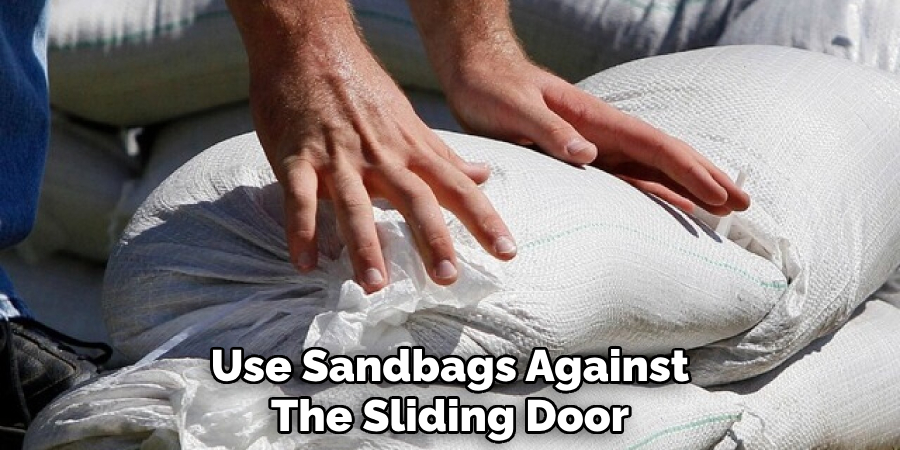
To prevent water intrusion during a hurricane, laying sandbags along the bottom of sliding doors can be an effective strategy. Before starting your installation, begin by ensuring the area is clear of debris and standing water.
Position the first row of sandbags snugly against the sliding door, stacking them tightly to create a barrier. It is essential to check for any gaps between the bags where water could seep through.
For optimal protection, consider a second layer of sandbags, staggering them slightly to enhance the barrier’s effectiveness. Use heavy-duty bags filled with sand to prevent them from being easily moved by wind or water flow.
Additionally, the bags should be monitored during the storm; if any bags shift or become compromised, adjust them to maintain the barrier and further reduce the risk of flooding inside the home.
Reinforcing Glass with Duct Tape or Adhesive Strips
Applying duct tape or adhesive strips in emergencies with limited time can serve as a last-minute protective measure for sliding doors. While not a foolproof solution, these materials can help reduce the risk of shattering glass. Start by cleaning the glass surface to ensure proper adhesion.
Next, apply strips of duct tape in a criss-cross pattern across the glass panels, ensuring that each strip overlaps with others to create a grid-like design. Make sure to press down firmly on the tape to ensure a secure bond.
This method helps to hold shattered fragments in place should the glass break, reducing the risk of injury from flying shards. However, this should only be considered a temporary measure, as more permanent solutions are needed once the immediate threat has passed.
Be aware that duct tape can also cause damage to window finishes upon removal, so use it cautiously.
Preparing the Surrounding Area
Clear the Area of Potential Projectiles
To effectively protect sliding doors during a hurricane, it’s crucial to clear the area of any items that could become dangerous projectiles in high winds.
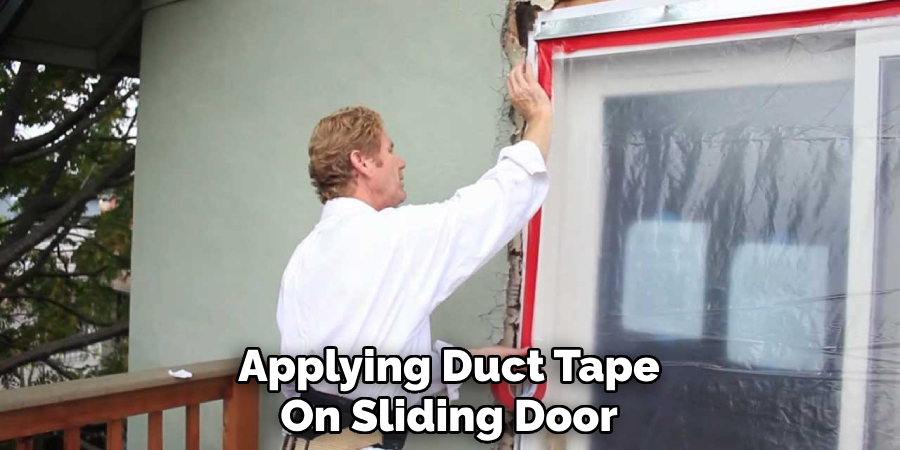
This includes outdoor furniture, BBQ grills, potted plants, and children’s toys, all of which can be easily lifted and tossed by powerful gusts, potentially causing significant damage.
omeowners should either secure these items indoors or ensure they are properly anchored down. In addition, any decorative features such as wind chimes or lightweight garden ornaments should be removed to minimize risk, as they can become hazardous projectiles if dislodged.
Trim Nearby Trees and Shrubs
Maintaining the vegetation surrounding sliding doors is essential for reducing the risk of damage during a storm. Overhanging branches can snap and fall onto the house or sliding doors, causing significant harm.
Homeowners should take the time to trim trees and shrubs, removing any dead or weak branches that may become a threat during high winds.
Additionally, keeping tree canopies well-groomed helps to prevent wind from catching and breaking off branches, ultimately safeguarding homes and providing a clearer space around the sliding doors.
Seal and Reinforce Door Tracks
Checking the tracks of sliding doors is another vital preparation step. Strong winds can sometimes dislodge sliding doors from their tracks, compromising their integrity and leaving them vulnerable to damage.
Homeowners should inspect the tracks for any debris or obstructions and clean them thoroughly. Applying weather stripping can create a tight seal that helps keep the doors securely in place.
Additionally, installing track locks provides further reinforcement and prevents the doors from being forcibly opened by strong winds, ultimately enhancing the safety and stability of the sliding doors during a hurricane.
Post-Hurricane Inspection and Maintenance
Inspect for Damage
After a hurricane, it’s essential to thoroughly inspect sliding doors for any potential damage. Use the following checklist: 1) Look for cracks in the glass or frame; 2) Check the integrity of the door frame for warping or bowing; 3) Examine for signs of water intrusion, such as dampness or mold around the edges.
Repair or Replace Damaged Components
If any damage is detected, prompt repairs or replacements are vital to maintain safety and functionality.
Replace broken glass panes with tempered glass for durability. For warped frames, consider realigning or replacing the affected sections. Ensure all tracks are functional and replace any that are bent or damaged.

Plan for Future Hurricanes
Utilizing temporary measures is helpful, but consider upgrading your sliding doors to impact-resistant models for long-term protection. Implementing more permanent protective solutions, such as storm shutters or reinforced frames, can greatly enhance your home’s resilience against future hurricanes.
Conclusion
In summary, understanding how to protect sliding doors from hurricane effects is crucial for safeguarding your home. Start with temporary measures, such as reinforcing glass with duct tape and using sandbags to block water intrusion.
Clear the area of potential projectiles and trim nearby trees to minimize risks. Additionally, reinforcing door tracks and checking for any structural weaknesses are vital steps.
However, consider upgrading to impact-resistant sliding doors and implementing permanent solutions like storm shutters for long-term resilience. It’s essential to take these actions well before a hurricane is on the horizon, ensuring your home remains protected.
Now is the time to assess your current sliding door protection and make necessary improvements to effectively shield your home from future storms. Preparing in advance can significantly enhance your safety and peace of mind during hurricane season.

